Alaska Salmon photos
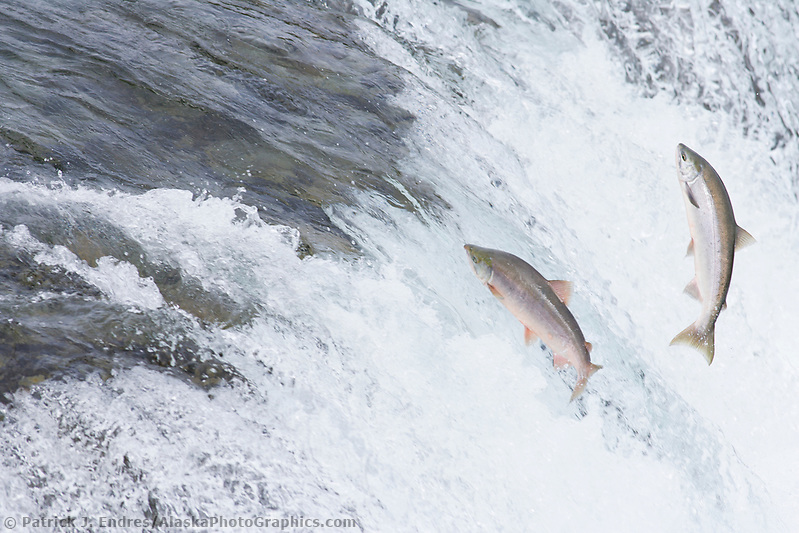
Red salmon “sockeye” leap up the falls of Brooks River. (Patrick J. Endres / AlaskaPhotoGraphics.com)
Wild Alaska Salmon
Wild salmon used to be distributed broadly throughout the world. However, sadly, due to damming, habitat loss, and other factors, wild salmon are now highly restricted. Alaska still has a healthy wild salmon population. Salmon usually are anadromous, meaning they are born in freshwater, migrate to the ocean, and then return to freshwater to reproduce. All of the Alaska salmon photos on this site are available as stock photos for commercial licensing or as fine art display pictures for home and office decor.
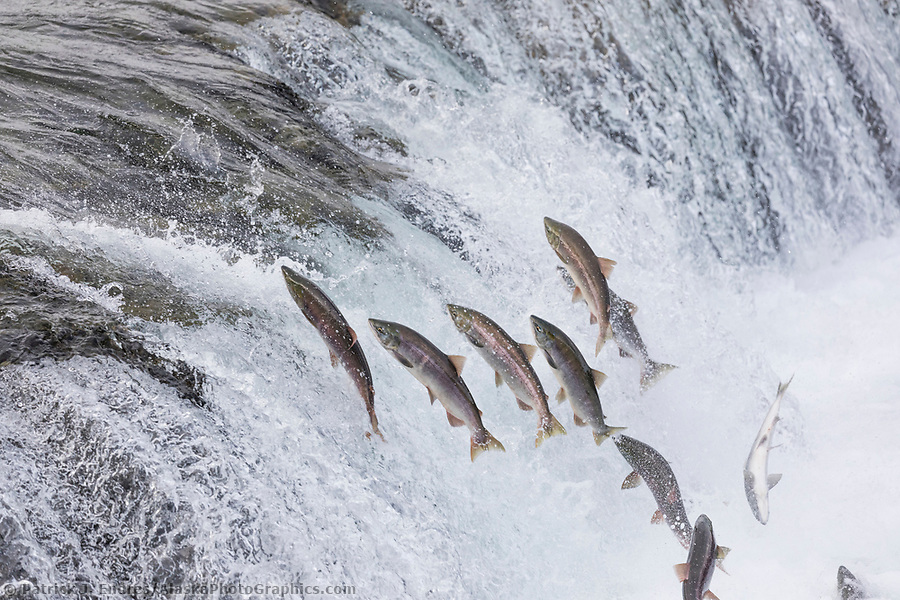
Red salmon migrate up the Brooks River and leap up the Brooks Falls, Katmai National Park, Alaska. (Patrick J Endres / AlaskaPhotoGraphics.com)
Alaska’s Five Species of Salmon
Salmon is a popular and essential food, considered healthy due to its high protein content, vitamin D, and Omega-3 fatty acids. Most Pacific salmon are wild-caught, although farmed fish contribute to salmon consumption. Alaska has five species of wild salmon, all of which are harvested for personal use by individuals and commercial fishermen. The five species include:
- King salmon, also called the Chinook salmon
- Silver Salmon, also called the Coho salmon
- Chum Salmon, also called the Dog salmon
- Red salmon, also called the Sockeye salmon
- Pink salmon, also called the Humpy salmon
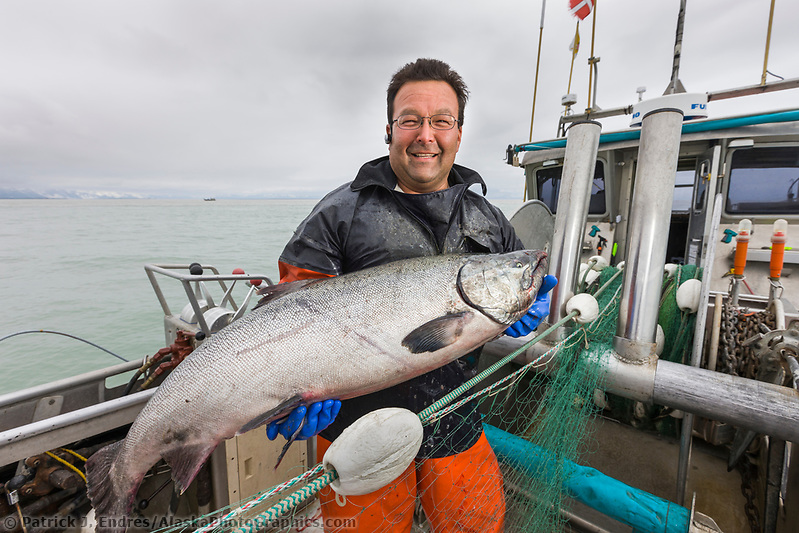
Commercial fisherman Bill Webber holds a King Salmon caught in his gill net during a 12-hour sockeye and king salmon opener on the Copper River Delta, Southcentral, Alaska. (Patrick J. Endres / AlaskaPhotoGraphics.com)
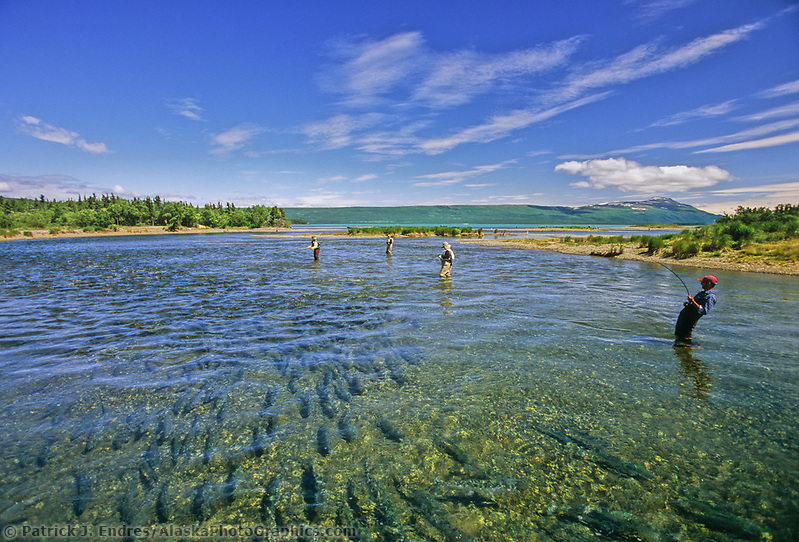
Sport fishing for red salmon on the Brooks River in Katmai National Park, Alaska. (Patrick J. Endres / AlaskaPhotoGraphics.com)
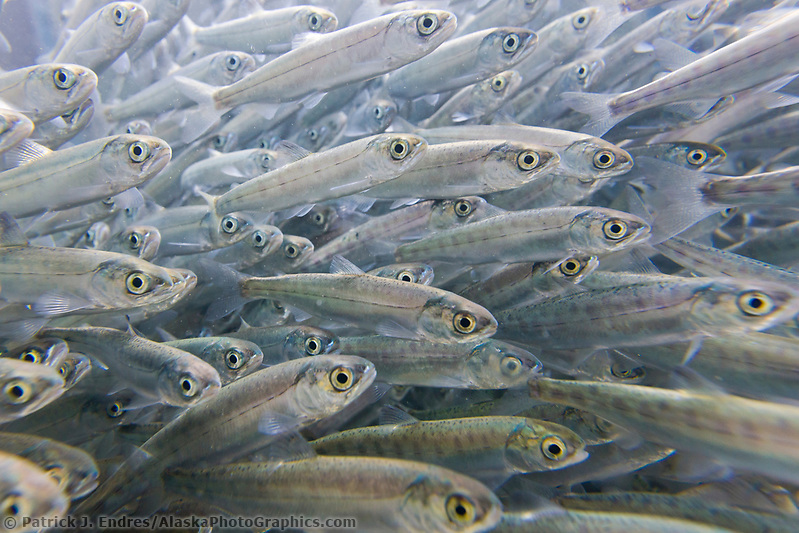
Sockeye salmon smolt from the Gulkana hatchery out migrate from Summit Lake, interior, Alaska (Patrick J. Endres / AlaskaPhotoGraphics.com)
King (Chinook) Salmon
King Salmon is the largest Pacific salmon, commonly weighing over 30 pounds. It is Alaska’s state fish and is highly sought after by anglers and commercial fishermen due to its size and rich oily meat. In Alaska, it ranges from the panhandle to the Yukon River. It is caught in rivers as well as the ocean open ocean waters. As the fish migrates up the river, it slowly changes color as it nears its spawning grounds.
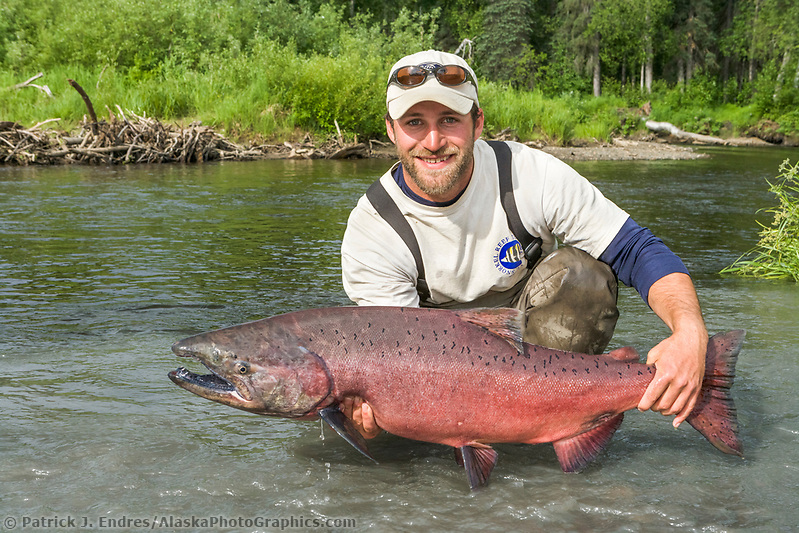
A fisherman holds a large king salmon caught on a fly rod in Red Creek, southcentral Alaska. (Patrick J. Endres / AlaskaPhotoGraphics.com)
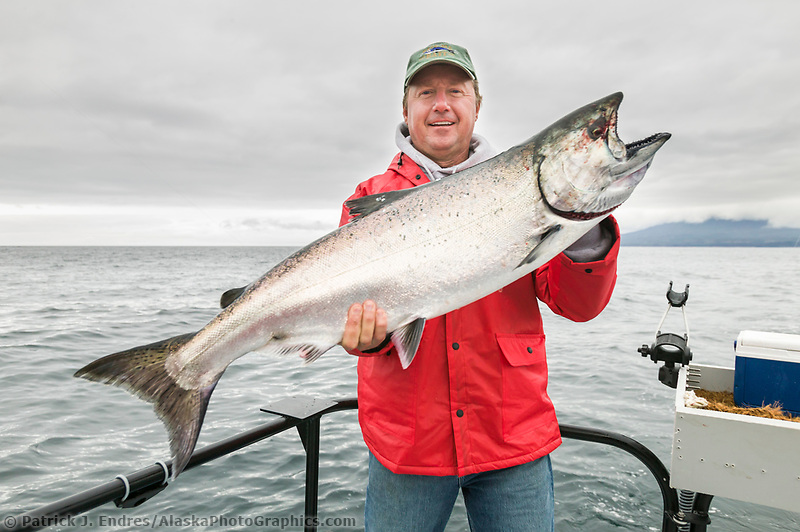
King salmon charter fishing in Sitka, Alaska. (Patrick J. Endres / AlaskaPhotoGraphics.com)
Red (Sockeye) Salmon
Red Salmon grow to as long as 33 inches and 6-8 pounds. They are blue and silver in the ocean but turn red with a green head when they enter fresh water to spawn. Males also develop a hump on their backs. Some consider red salmon to be the best-tasting fish in the world. Many animals feed on salmon, and brown bears consume significant quantities to increase their fat stores for winter hibernation.
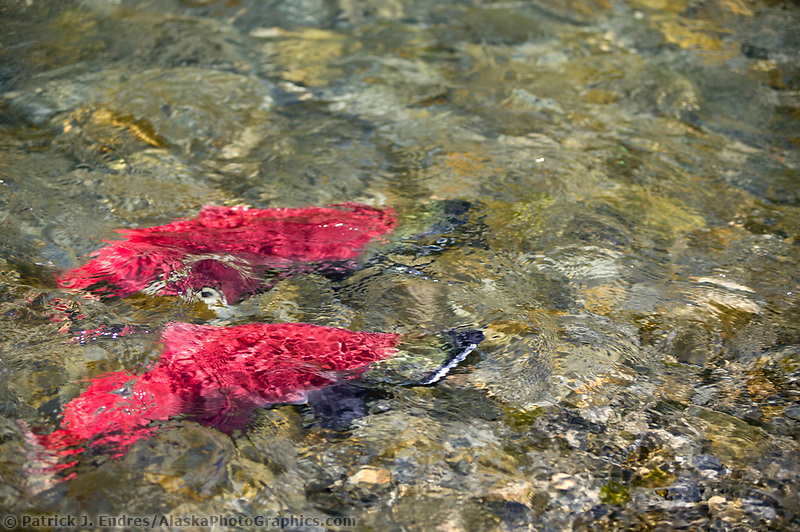
Red salmon, sockeye, Granite Creek, Kenai Peninsula, Alaska (Patrick J. Endres / AlaskaPhotoGraphics.com)
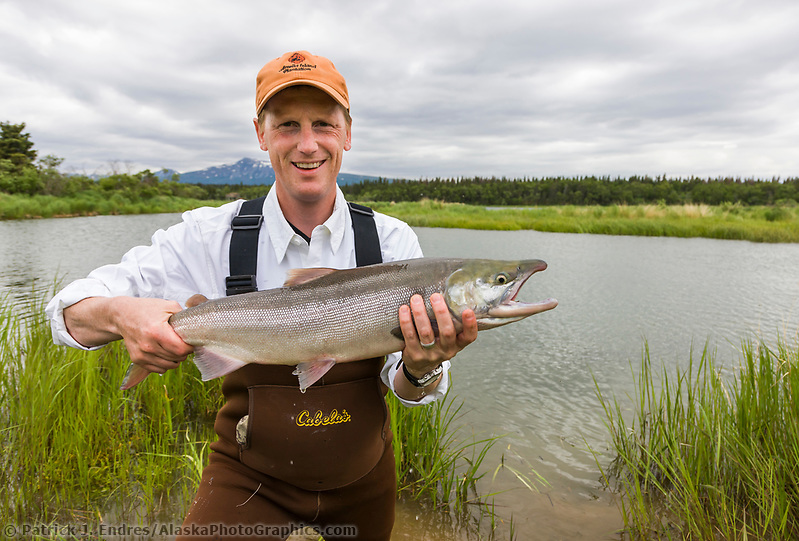
Fly fishing for red salmon on the Brooks River, Katmai National Park, southwest Alaska. (Patrick J. Endres / AlaskaPhotoGraphics.com)
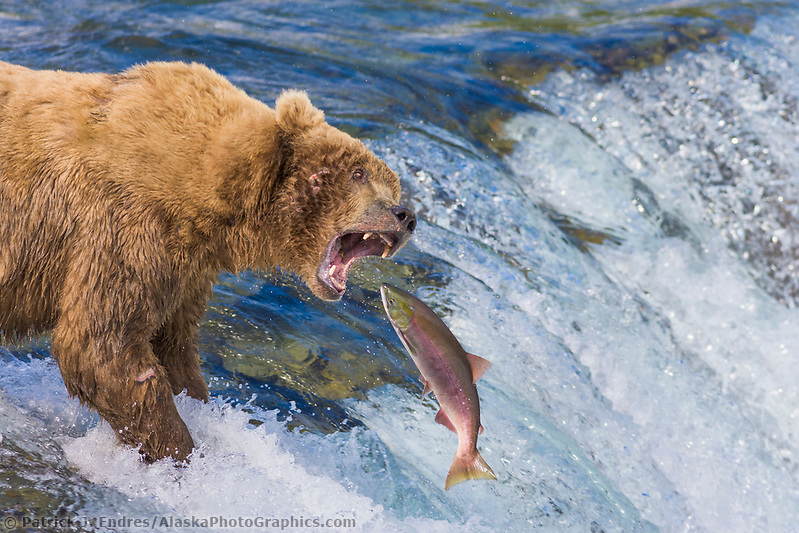
Brown bear attempts to grab a red salmon as it jumps the Brooks river falls, Katmai National Park, Alaska (Patrick J. Endres / AlaskaPhotoGraphics.com)
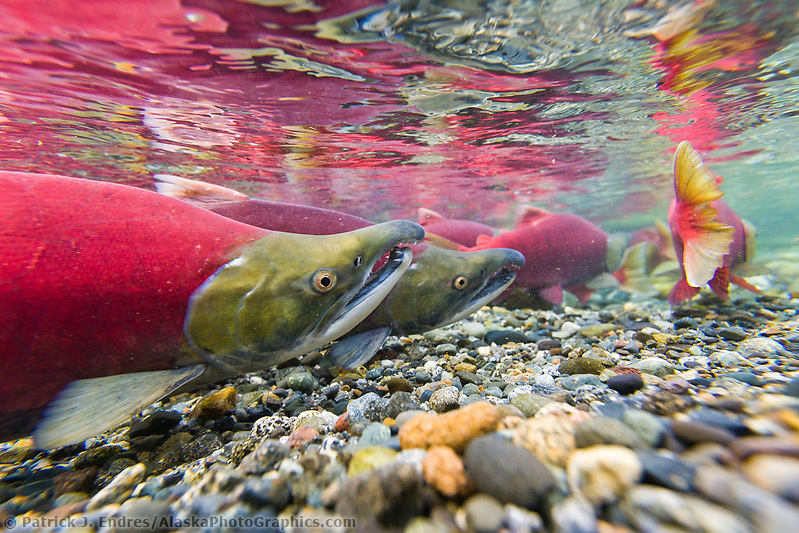
Red salmon or “sockeye” in the spawning phase (red body and green head) in a small stream in the Alaska mountains. (Patrick J. Endres / AlaskaPhotoGraphics.com)
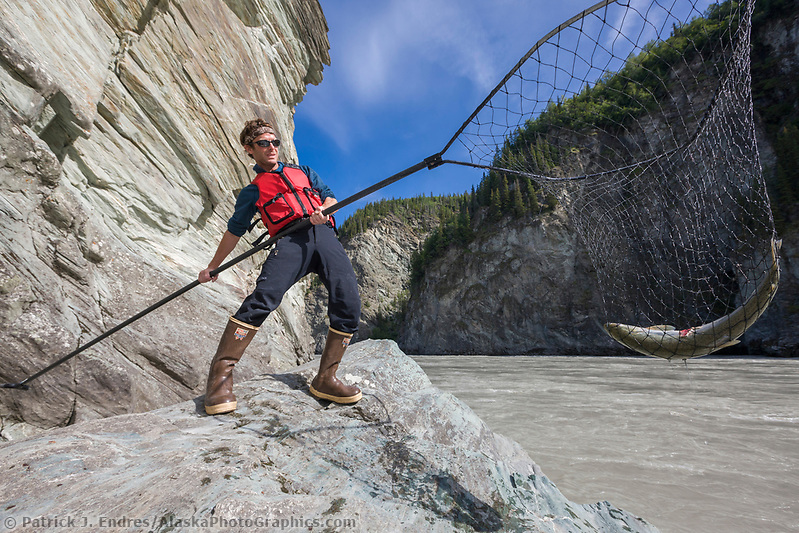
Dipnetting for sockeye salmon in the Copper River, southcentral Alaska. (Patrick J. Endres / AlaskaPhotoGraphics.com)
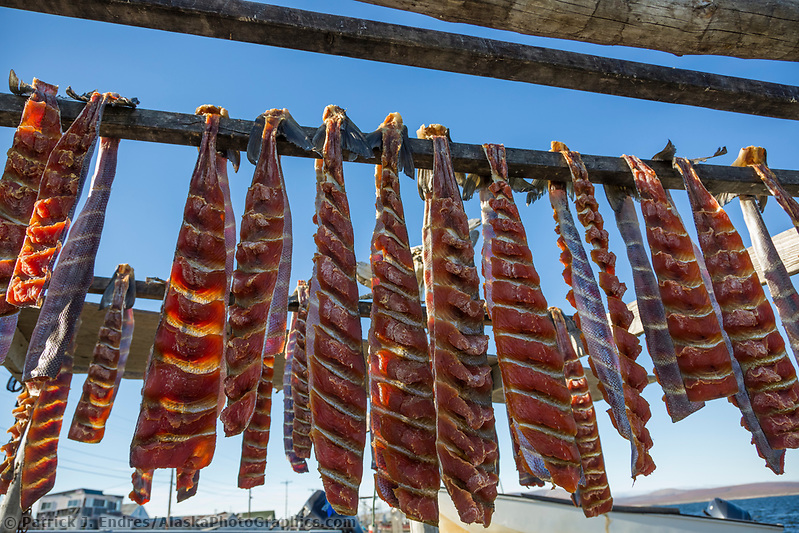
Salmon dry in the air in the coastal village of Teller, Seward Peninsula, Alaska. (Patrick J Endres / AlaskaPhotoGraphics.com)
Pink Salmon
Pink salmon are the smallest of the Pacific salmon, growing to around 4 pounds. They are also the most abundant and are essential for the fishing industry. Harvests of greater than 100 million pink salmon have occurred in Alaska alone. Black bears also feed on salmon in the streams along the shores of coastal Alaska. Pink salmon do not migrate great distances up rivers, unlike the other four species of salmon.
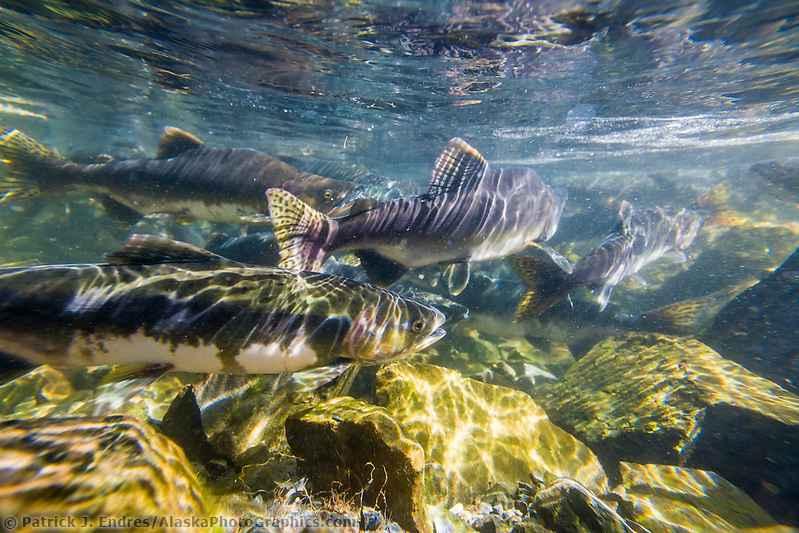
Pink Salmon spawn in the stream adjacent to the Sitka Sound, Fairbanks, Alaska. (Patrick J Endres / AlaskaPhotoGraphics.com)
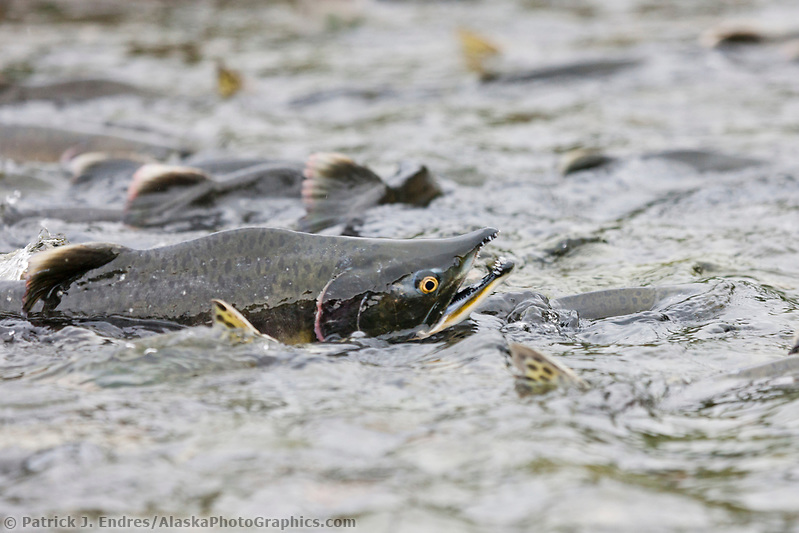
Pink salmon in a stream along Western Prince William Sound, Chugach National Forest, Kenai Peninsula, Southcentral, Alaska. (Patrick J. Endres / AlaskaPhotoGraphics.com)
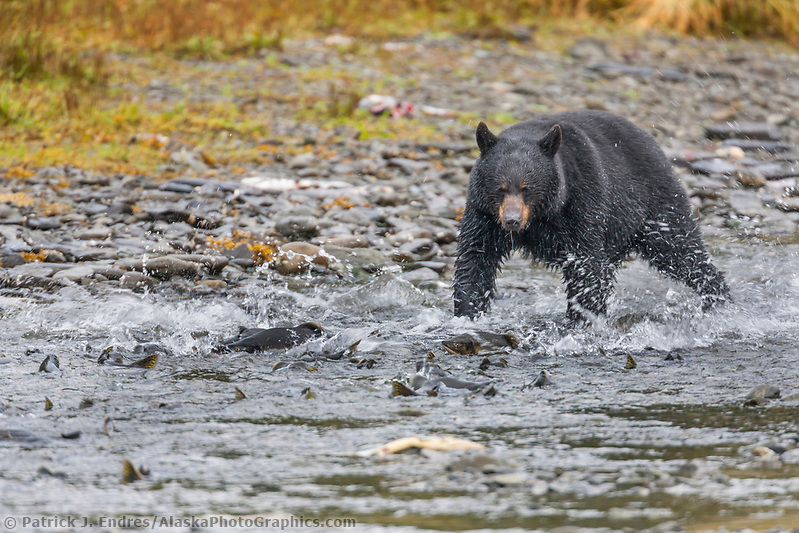
Black bear fish for pink salmon in a stream along western Prince William Sound, Chugach National Forest, Kenai Peninsula, Southcentral, Alaska. (Patrick J Endres / AlaskaPhotoGraphics.com)
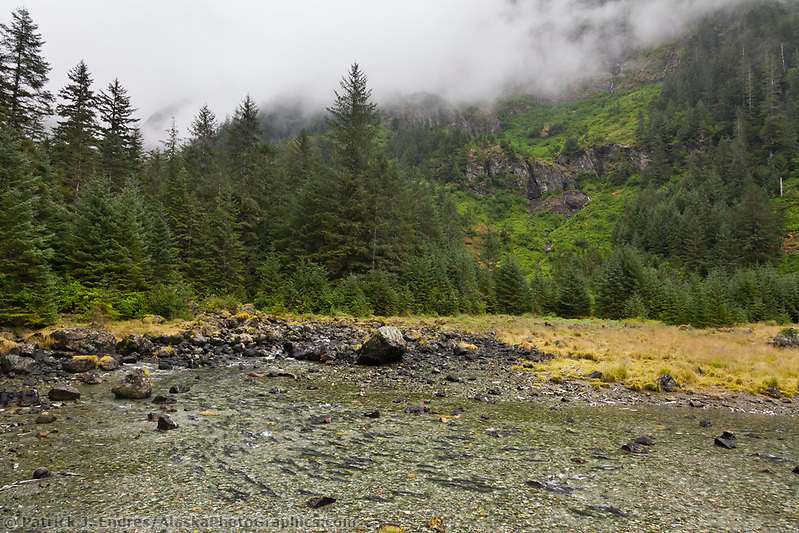
Pink salmon stream along the shore of Knight Island, Prince William Sound, Chugach National Forest, southcentral Alaska. (Patrick J. Endres / AlaskaPhotoGraphics.com)
